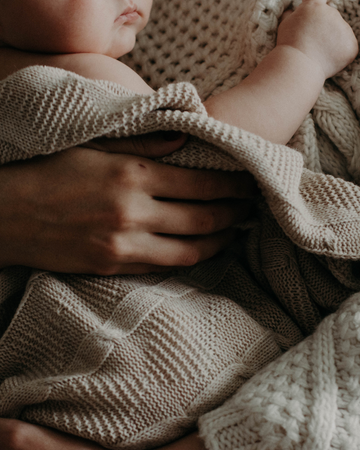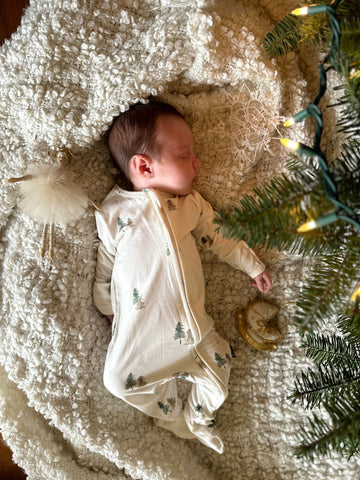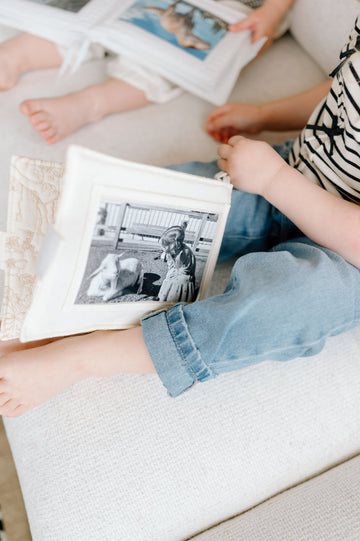The hidden dangers behind that silky-soft fabric—and what parents need to know
Have you ever wondered why bamboo clothing seems to be everywhere in North America — but you rarely see it in Europe?
The answer has everything to do with chemical safety laws, and one chemical in particular: carbon disulfide (CS₂).
Bamboo Isn’t the Problem — It’s the Process
Let’s start with this: the bamboo plant itself is not toxic. It’s fast-growing, renewable, and can be cultivated without pesticides. But turning bamboo into that soft, drapey fabric you see on store shelves? That’s where things get complicated.
The vast majority of bamboo clothing is made using a chemical process called viscose (or rayon) production. This method breaks down tough bamboo fibers using highly toxic solvents — most notably carbon disulfide.
According to the European Chemicals Agency (ECHA), carbon disulfide is linked to:
- Neurotoxicity
- Reproductive harm
- Cardiovascular issues
- Organ damage with prolonged or repeated exposure
- ECHA Substance Info: Carbon Disulfide
What Is Carbon Disulfide?
Carbon disulfide (CS₂) is a volatile, flammable solvent used in the viscose process to dissolve cellulose—essentially turning bamboo into a pulp that can be spun into fabric.
While it’s effective, CS₂ has a long, troubling history of harming factory workers, local ecosystems, and potentially end users.
"Carbon disulfide was recognized as a major occupational hazard as early as the 1800s… It is deeply troubling that we allow clothing labeled as ‘eco-friendly’ to be made with the same process today.”
- Dr. Paul Blanc, Professor of Medicine at UCSF and author of Fake Silk
Europe Regulates It. North America Doesn’t.
The European Union has taken a much more cautious stance on chemical safety in textiles.
Under the REACH regulation (Registration, Evaluation, Authorisation and Restriction of Chemicals), carbon disulfide is classified as a substance of very high concern. Clothing made with viscose must meet strict chemical safety protocols.
In the EU, viscose producers are required to:
- Use closed-loop systems
- Prove solvents like CS₂ are safely recovered
- Ensure no harmful residues remain in finished garments
In contrast, North American regulations (Health Canada, U.S. CPSC) do not require testing for CS₂ residues in clothing — not even in children’s pajamas.
That means clothing can legally be labeled “eco-friendly” or “safe,” even if made with known neurotoxins and reproductive hazards.
Why It Matters Especially for Children
Infants and toddlers are especially vulnerable to chemical exposure. Their nervous systems are still developing, and even trace levels of certain toxins can interfere with:
- Sleep quality
- Hormone regulation
- Cognitive and emotional development
According to the World Health Organization, CS₂ exposure at just 30 µg/m³ in occupational settings has been linked to:
- Mood changes
- Anxiety
- Sleep disturbances
- Cognitive issues
- WHO, 2002
While this level is much higher than what’s expected in clothing, the lack of regulation means parents are left without transparency.
So Why Is Bamboo Clothing Less Common in Europe?
Because of strict EU laws, many European brands:
- Avoid bamboo viscose entirely
- Choose safer, closed-loop alternatives like TENCEL™ Lyocell
TENCEL™ is made with a non-toxic solvent (NMMO) and uses a closed-loop system where over 99% of the solvent is recovered and reused.
In short: European manufacturers are held to higher chemical safety standards—and bamboo rayon never gained the popularity there that it did in Canada and the U.S.
What You Can Do Instead
As a parent, navigating labels and certifications can feel overwhelming. Here’s what helps:
Safer Fabric Alternatives:
- TENCEL™ Lyocell (closed-loop, non-toxic)
- Organic Cotton
Look for Trusted Certifications:
- OEKO-TEX® (tests for many harmful substances, but not always CS₂)
- GOTS (stronger environmental and social standards)
Support Transparent Brands:
Choose companies that are clear about where and how their fabrics are made — especially for baby and children’s items.
At The Cotton Lane, We’re Not Taking Chances
We do not use bamboo rayon in any of our baby sleepwear.
Instead, we’ve carefully chosen Austrian-made TENCEL™ by Lenzing AG — the world leader in responsible fiber innovation and GOTS certified organic cotton.
Click here to shop our safe, non-toxic pajamas.
Why we love TENCEL™:
- Silky-soft (even softer than bamboo)
- Naturally breathable and regulates temperature
- Free from harmful residues — perfect for sensitive baby skin
Because your baby deserves more than a marketing label. They deserve real safety.
References:
- ECHA. Substance Information on Carbon Disulfide
- WHO. Concise International Chemical Assessment Document 46: Carbon Disulfide (2002)
- Blanc, Paul D. Fake Silk: The Lethal History of Viscose Rayon. Yale University Press.
- Lenzing Group. TENCEL™ Sustainability Overview
- European Commission. REACH Regulation (EC 1907/2006)




